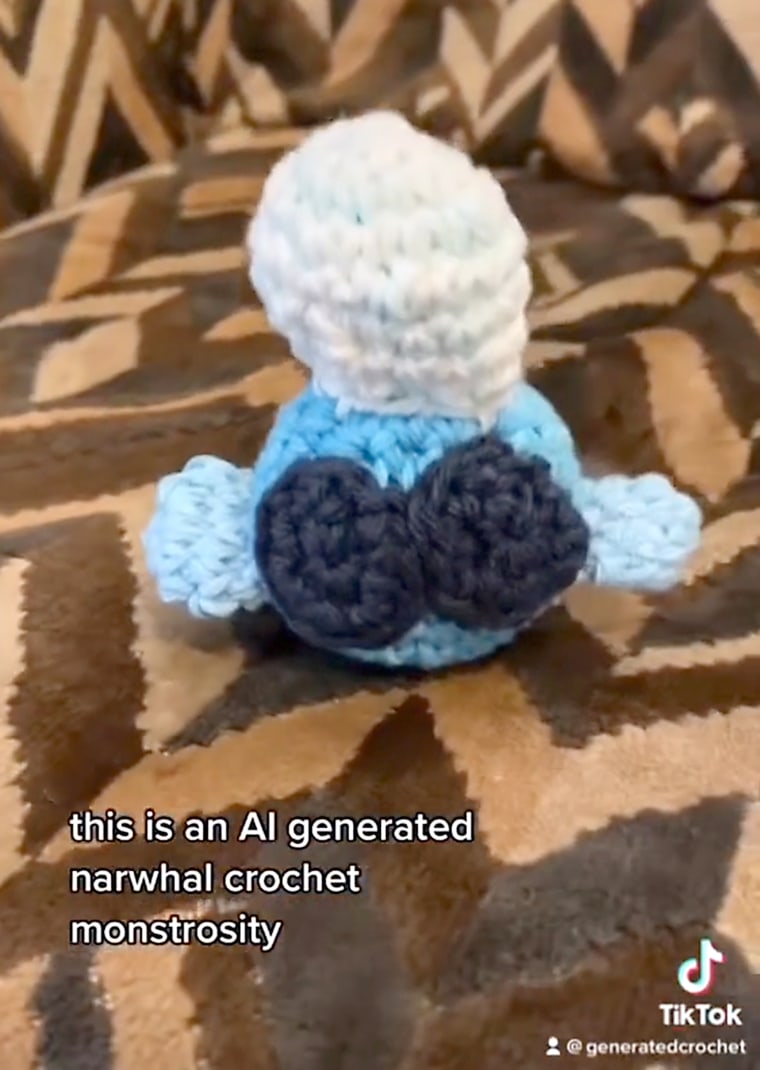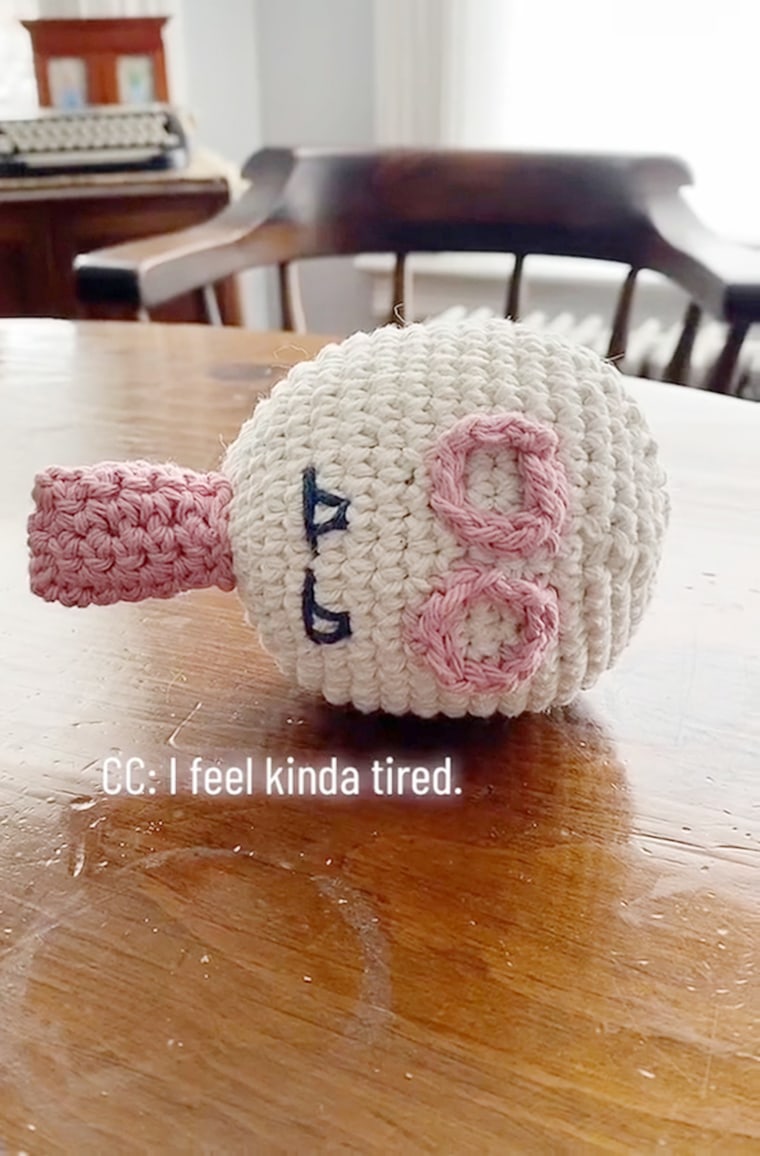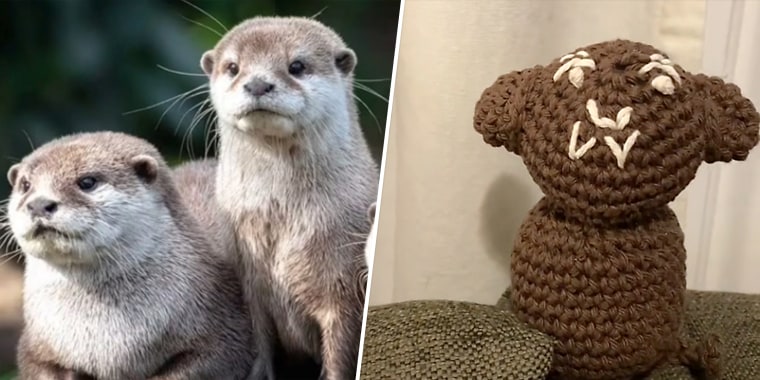ChatGPT can write your wedding vows and research papers; it can pass the bar and the MCAT.
But can it make a crochet narwhal?
TikTok user Alex Woolner (who uses they/them pronouns) has gone viral for their videos of crochet stuffed animals made from patterns generated by the AI bot ChatGPT.
Made open to the public in November 2022, ChatGPT is an online language model created by OpenAI. The chatbot’s language generating abilities have been harnessed by marketers, students, and even, controversially, publications.
Woolner's TikTok, @generatedcrochet, uses ChatGPT for more whimsical purposes — and in doing so, shows its limitations.
That's because the chatbot-generated crochet patterns create results that are ever-so-lightly, but completely undeniably ... off. Woolner's TikTok page is populated by palm-sized octopi, otters and more that would be at home on the Island of Misfit Toys.

Before this turn to TikTok, Woolner was a regular knitter and crocheter. The idea to combine their lifelong hobby with this new technology began after Woolner noticed their partner using ChatGPT for work to draft email messages and blogs. Around the same time, Woolner’s young stepson’s rubber narwhal toy had recently clogged the bathtub, so the couple had “narwhals on the brain,” Woolner tells TODAY.com.
Inspired, Woolner asked ChatGPT for a crochet pattern for a stuffed narwhal — and so “Gerald" was born, the now-viral crochet narwhal that has a spherical round body, a thick tail, two huge eyes and a bulb-like tusk, in contrast to the slender frame of real-life narwhals.
Posted on Jan. 11, Woolner captioned the video: “It’s cursed and I love it #AI #crochet #narwhal #knit #worstedwaitaminute.”
TikTok users quickly fell for Gerald’s quirky charm: “Is it bad that I love it?” one commented. Another grappled with scorning AI art in theory but loving it in reality: “Like. I fully back the concept of doing this as proof that AI shouldn’t be used to generate art, but also I wuv himb.”
One person called Gerald "fabulous," another said it looked like a "Disney villain sidekick." YouTuber and science personality Hank Green commented, “I would like to buy it.”
As of March 23, Woolner's first AI-generated creation video has 1.1 million views and 128,000 likes.
Woolner is not a full-time content creator — they work in international education and run an arts nonprofit by day.
Speaking to TODAY.com, Woolner says they think the video blew up thanks to a combination of factors: a heightened interest in crochet and fiber arts since the COVID-19 lockdown and a desire to escape the negative news cycle.
“These little stuffed animals are pretty cute,” Woolner says. “And I think that seems to be something that people are interested in watching. Because like, life can be stressful and tough.”
Further, the videos are a tangible and often humorous application of a potentially society-shifting technology. Woolner's rule is to follow the ChatGPT pattern to "the letter," even when their human sense knows better: “Before I started I knew that this was going to look super messed up,” Woolner said while creating Gerald the Narwhal.
Woolner's rule often entails embracing the absurdities of ChatGPT’s instructions, which hit snags in the transition from the virtual world to real world.
For example, when creating an otter (which had Princess Leia-like ears), ChatGPT instructed Woolner to “embroider the face” using white yarn. When Woolner asked for further clarification about embroidering an otter's face, they were coached through creating “small dots for eyes” and “two small V-shaped lines” for whiskers. Finally, Chat GPT instructed to “add a small curved line above the eyebrow” to give the impression of a “happy impression.”

Then, when trying to recreate Gerald again for a Daily Beast article, ChatGPT came up with a completely new pattern.
Woolner’s TikTok is gaining traction during a time of cultural conversation and curiosity surrounding art created by AI, like Lensa, an app that create extremely realistic portraits based off of existing images, and DALLE-2, a program created by tech company OpenAI (also behind ChatGPT) that can “create realistic images and art from a description in natural language.”
Whereas these apps create digital art with a click, Woolner's TikTok page differs in that the AI-generated patterns require a human touch to be actualized. Woolner says their crochet creations show missing from the digital art: The (literal) human touch.
“I think that just the work that I’m doing has brought some comfort to people and also shown me that I don’t think there is truly a replacement for the human element in the creative process,” Woolner says.
"I don’t think there is truly a replacement for the human element in the creative process."
Alex Woolner
Since posting the video, Woolner has posted dozens of videos of other crochet creations made from AI-generated patterns including a geoduck with two fang-like triangles for eyes.
“There are some people who just can’t help but tell me I’m doing it wrong,” Woolner says. “Or point out how, I could do things ‘better.’ But for the most part, it’s all just been people who have told me that they’ve enjoyed watching them for whatever reason.”
After enough users commented that they wanted a “Gerald,” Woolner posted several handmade narwhals for sale online, but found it to be unsustainable to continue to produce and sell the critters. Woolner is still selling several AI crochet patterns on their website.
